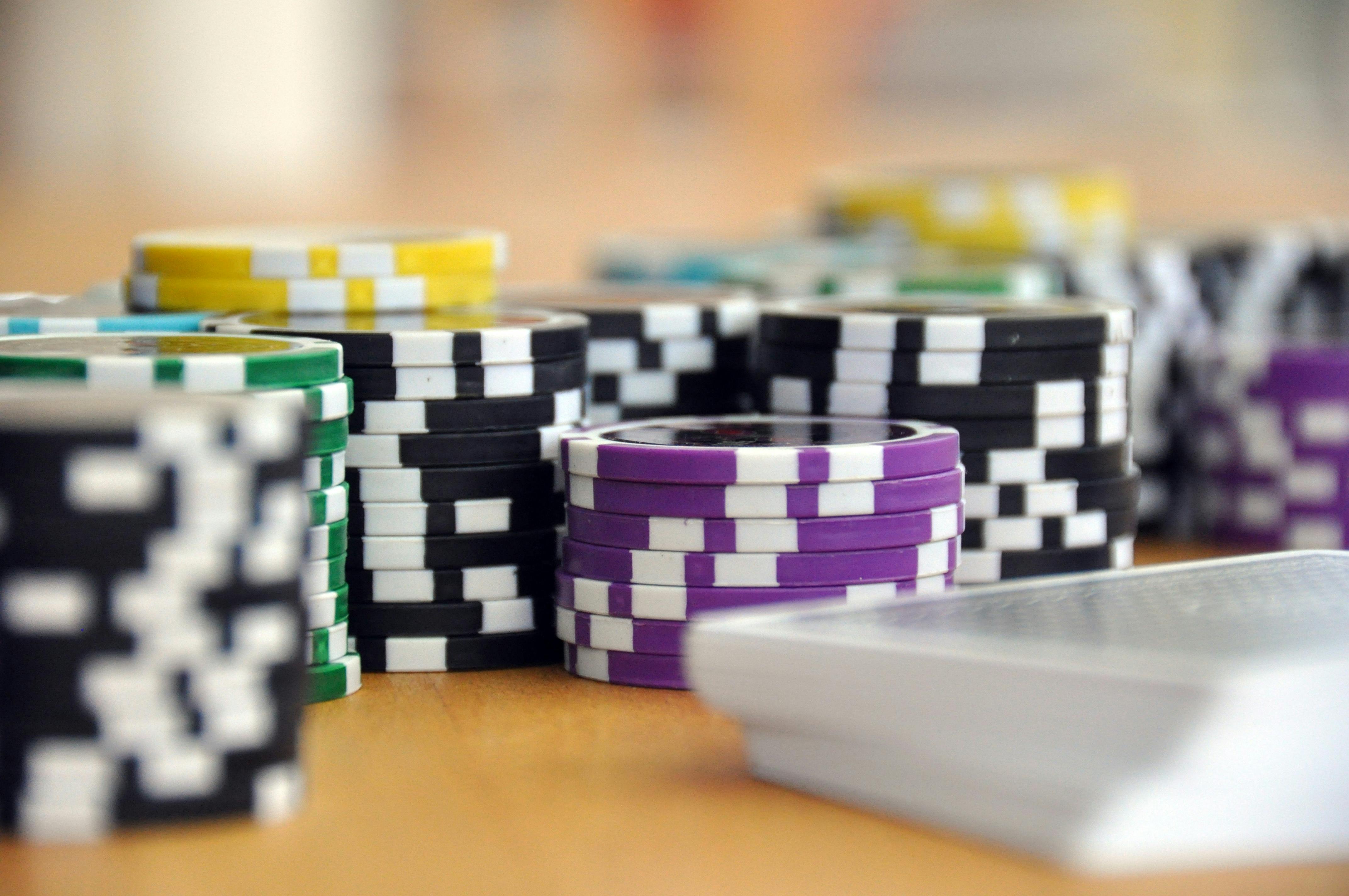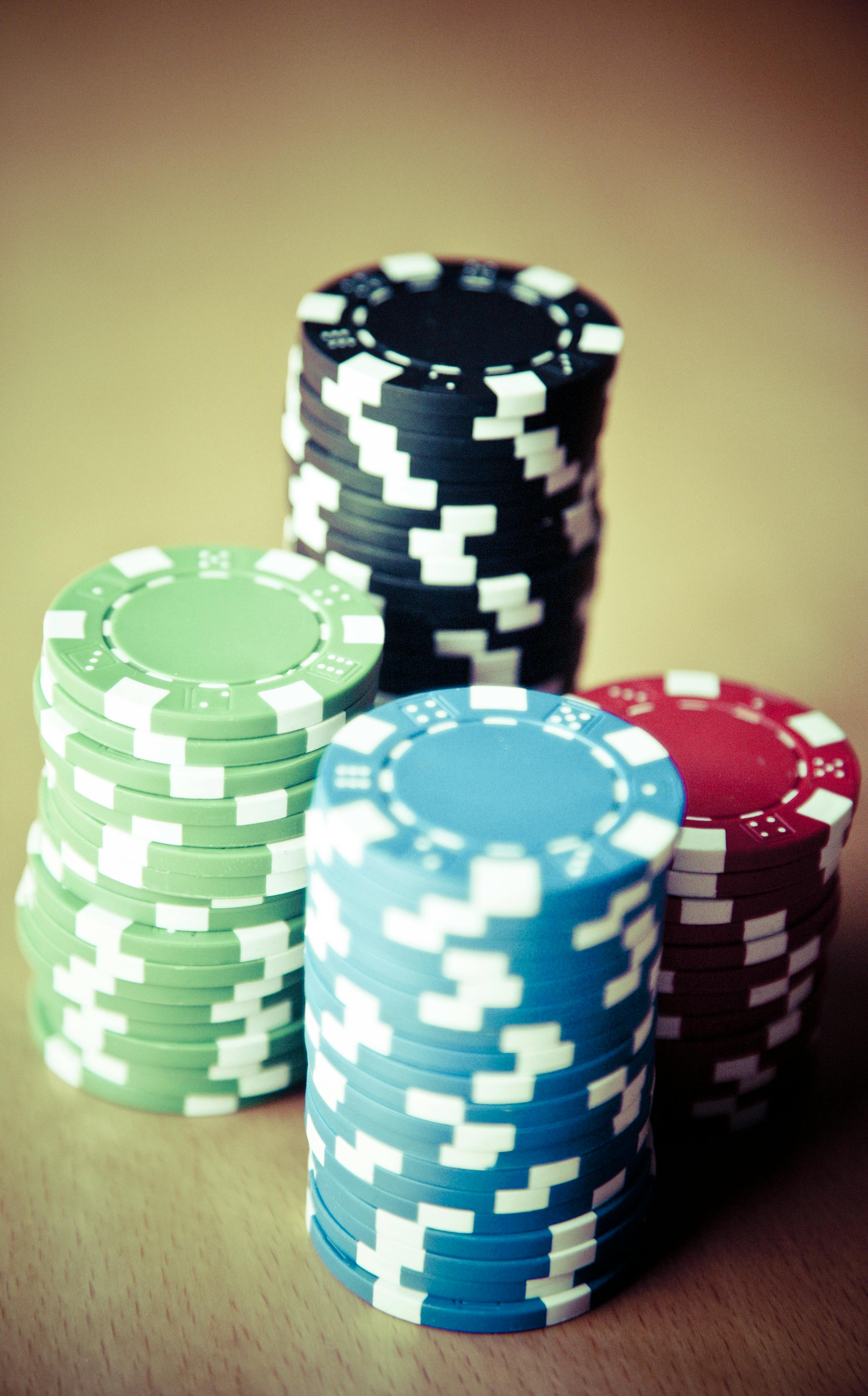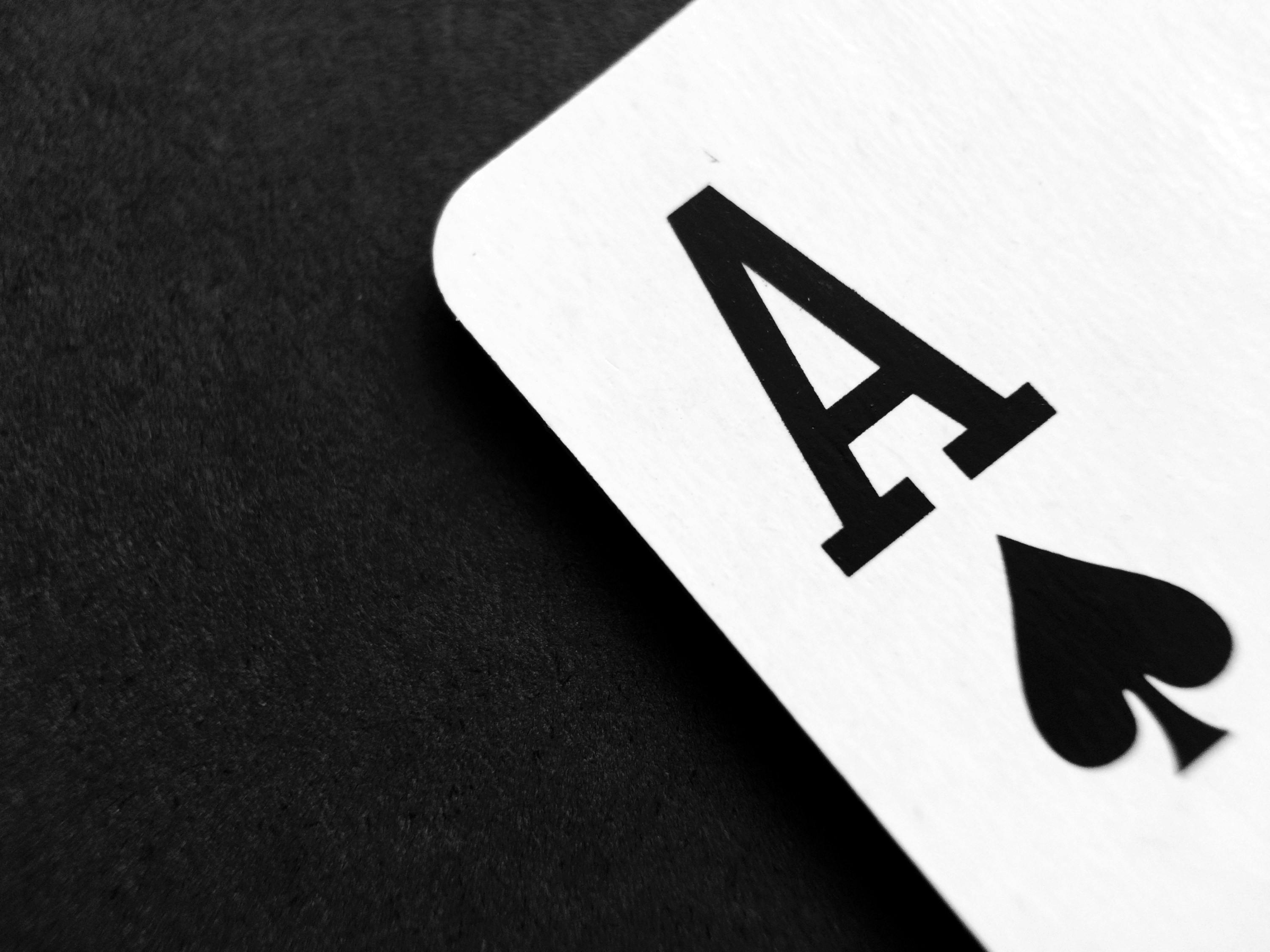Basic Strategy in Blackjack with Charts: Expert’s Guide for Smarter Play
Blackjack strategy can feel like a maze of confusing choices for new players. Questions like “When should I hit?” “Should I stand?” or “Is now the time to double down or surrender?” are just the beginning.
Imagine standing when you should’ve hit or surrendering when a double was ideal, you’d lose out! If you’re just here for fun, you don’t need to worry too much about strategy.
But if you’re serious about improving your blackjack skills, this guide is for you. I’ll break down each strategy step-by-step with insights and experience to make it easier to win, not just play. Keep reading!
Important Reminder Before Memorizing Basic Strategy Blackjack Chart!
Before you jump into memorizing basic strategy blackjack charts, here are a few things to keep in mind to make sure you're really prepared to play smart. Blackjack isn't just about knowing the basics but being ready for anything the game throws at you. Let’s get into it:
- Basic strategy is just the start: Basic strategy is a good starting point, but it’s only the first step. It helps lower the casino's advantage, making it easier for you to play smarter. But if you want to really beat the game, you’ll need advanced skills like card counting and knowing when to adjust your play.
- Memorize it like the back of your hand: To play effectively, you need to know your charts thoroughly. Quick glances won’t cut it in the heat of real gameplay, where distractions are common. If you can’t recall it under pressure, you’re not ready. Perfection in memorization is key.
- Use charts as a guide, not rules: Charts are a solid foundation, but not always a strict rulebook. High-stakes players sometimes adjust moves to manage risk, so feel free to adapt based on the game.
- Adapt to different variations: Not all games use the same rules, so the blackjack strategy chart you start with might not work everywhere. As you encounter different game types, you’ll need to tweak your strategy. The stronger your basic knowledge, the easier it is to adapt.
If you're ready, keep scrolling to my guide on basic blackjack strategy with charts!
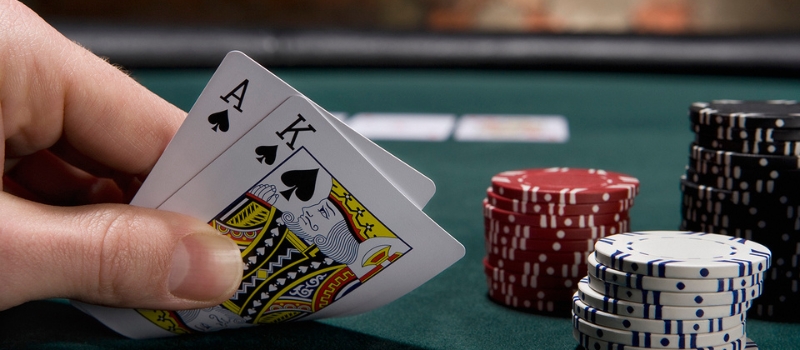
Basic Blackjack Strategy with Charts
The best way to remember the core decisions that every blackjack player needs to know is through charts. With the strategy charts, you’ll learn exactly: when to hit, stand, double down, split, and surrender.
To get started, here's how to read the chart:
How to read the blackjack basic strategy chart:
|
Basic Blackjack Chart: Dealer Hit on H17
Now, I’ll start with a basic blackjack strategy chart to help you visualize the recommended moves for each situation!
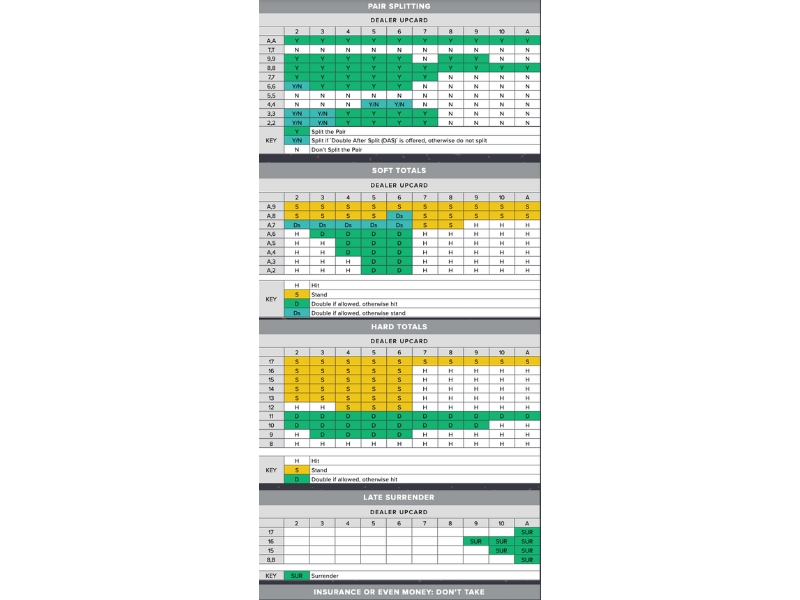
Note: This chart is tailored for an H17 game, a popular style where the dealer must hit on a hard 17. This approach simplifies learning and applying the strategy for multiple cases without needing separate charts for each rule variation.
Memorizing basic strategy phrases can be more effective than constantly looking at a blackjack strategy table. So, I break down the table into these simple phrases:
When to surrender (If allowed):
- Hard 16 against dealer’s 9, 10, or Ace.
- Hard 15 against dealer’s 10.
- Pair of 8s against dealer’s Ace (if surrender is allowed on pairs).
If not listed, don’t surrender and refer to the hard total blackjack rules.
When to split pairs:
- Aces: Always split.
- Tens: Never split.
- 9s: Split vs. Dealer 2 - 9 (except 7), otherwise stand.
- 8s: Always split.
- 7s: Split vs. Dealer 2 - 7, otherwise hit.
- 6s: Split vs. Dealer 2 - 6, otherwise hit.
- 5s: Double vs. Dealer 2 - 9, otherwise hit.
- 4s: Split vs. Dealer 5 - 6, otherwise hit.
- 3s: Split vs. Dealer 2 - 7, otherwise hit.
- 2s: Split vs. Dealer 2 - 7, otherwise hit.
What to do with soft totals (Hands with Ace as 11):
- Soft 20 (A,9): Stand.
- Soft 19 (A,8): Double vs. Dealer 6, otherwise stand.
- Soft 18 (A,7): Double vs. Dealer 2 - 6, hit vs. 9-Ace, otherwise stand.
- Soft 17 (A,6): Double vs. Dealer 3 - 6, otherwise hit.
- Soft 16 (A,5): Double vs. Dealer 4 - 6, otherwise hit.
- Soft 15 (A,4): Double vs. Dealer 4 - 6, otherwise hit.
- Soft 14 (A,3): Double vs. Dealer 5 - 6, otherwise hit.
- Soft 13 (A,2): Double vs. Dealer 5 - 6, otherwise hit.
What to do with hard totals (Hands without Ace or Ace as 1):
- 17 or Higher: Stand.
- 16: Stand vs. Dealer 2 - 6, otherwise hit.
- 15: Stand vs. Dealer 2 - 6, otherwise hit.
- 14: Stand vs. Dealer 2 - 6, otherwise hit.
- 13: Stand vs. Dealer 2 - 6, otherwise hit.
- 12: Stand vs. Dealer 4 - 6, otherwise hit.
- 11: Always double.
- 10: Double vs. Dealer 2 - 9, otherwise hit.
- 9: Double vs. Dealer 3 - 6, otherwise hit.
- 8 or Lower: Always hit.
Example: You’re dealt 8 and 8 (a total of 16), and the dealer’s up card is 6.
- Step 1: Identify your hand type: Your hand is a pair of 8s. This is a situation where splitting might be an option.
- Step 2: Check the pair splitting table: Look at the strategy board under pair splitting. It says Y (always split, regardless of the dealer’s card).
- Step 3: You split the 8s into two separate hands, each with an initial value of 8.
In blackjack, following a basic strategy isn’t just about knowing what move to make, but also the order in which to consider your options. Here’s the order of operations for making your decisions effectively: surrender, split, double, hit/stand.
- Surrender (if allowed) on your first two cards if you have a weak hand against a strong dealer card.
- Split if you’re dealt a pair (like two 8s or two Aces)
- Double (if allowed) to increase your chances of winning.
- Hit/Stand: If none of the above apply, use the chart to decide whether to hit or stand based on your hand total and the dealer’s up card.
I’ll guide these decisions more specifically in the following sections of the article. Keep scrolling!
Blackjack Strategy Chart: Dealer Stand on Soft 17
When the dealer stands on an S17, he can’t hit on this, it slightly lowers their chances of improving their hand, which means you need to tweak your strategy to get the best odds. Here’s the blackjack perfect strategy chart for an S17 game:

At first glance, the strategy for the S17 game is quite similar to the H17 one. And yes, most of the strategies of these two games are the same. However, there are two small differences in the S17 strategy as follows:
- Surrender: Surrender with hard 15 against a dealer 10 and with hard 16 against 9, 10, or Ace.
- Soft 18 (A,7): Double down against dealer’s 3-6, hit against 9-Ace, otherwise, stand.
By checking out the charts (or better yet, memorizing some key phrases), you’re giving yourself the best shot at making the right call each time. It’ll help you play faster, make fewer mistakes, and keep the house edge as low as possible. Trust me, it’s worth the effort!
Alternative Strategies in Blackjack
Once you've nailed the basics, there are some alternative strategies to try that can give you an extra edge in blackjack. Here’s a quick look at two popular methods: card counting and advanced betting strategies.
Card Counting
Card counting helps you keep tabs on high and low cards left in the deck, so you know when the odds are in your favor. The Hi-Lo method is a common go-to and pretty straightforward:
Step 1: Give each card a value:
- 2 to 6: +1
- 7 to 9: 0
- 10, J, Q, K, A: -1
Step 2: Each time a card comes up, add or subtract based on its value.
Step 3: If your count is high, it means there are more high cards left, which is a good time to raise your bet.
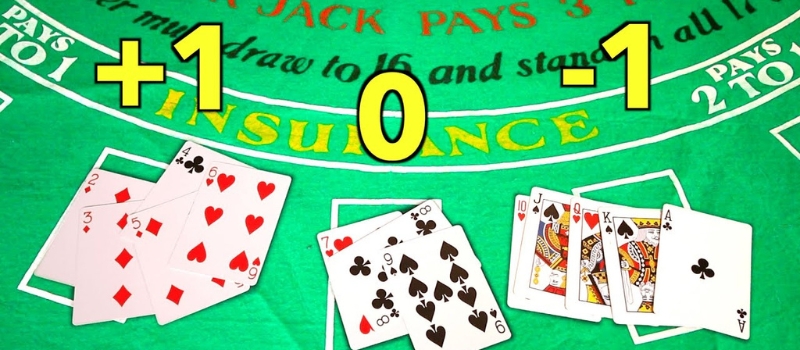
Advanced Betting Strategies
Advanced betting strategies help you adjust your bets based on wins or losses:
- Martingale: Double your bet after every loss. It’s risky with long losing streaks and needs a big bankroll.
- Paroli: Double your bet after a win. Great if you’re on a streak, but risky if you lose right after.
- Fibonacci: Bet according to the Fibonacci sequence (1-1-2-3-5-8) after losses and move back two steps on wins. It’s safer than Martingale but can still rack up losses on a long streak.
These strategies can add some excitement and potential profit, but they come with risks. So, I recommend making sure to manage your bankroll so things don’t get out of hand!
Strategies for Popular Blackjack Variants
Below is a summary table of the popular blackjack variations and special strategies for each variation:
Blackjack Variant | Key Rules | Strategy Tips |
European Blackjack | - Dealer stands on soft 17 - No dealer peek for blackjack - Dealer blackjack wins against player blackjack - Double down only on 9 to 11 - Split only same 10-point cards (e.g., two Queens, not 10 and Jack) | - Play conservatively since the dealer doesn’t peek for blackjack - Limit doubling and splitting |
Atlantic City Blackjack | - Dealer stands on soft 17 - Double down on any two cards - Split up to three times - Split Aces once, one card per Ace - Late surrender allowed | - Take advantage of flexible doubling and splitting options - Use late surrender in tough situations |
Spanish 21 | - All 10s removed from the deck - Player blackjack always wins - Double down after splitting and any two cards - Bonus payouts for hands like 5-card 21, 6-7-8, or 7-7-7 | - Utilize doubling after splitting - Aim for bonus hands to increase payouts |
Perfect Pairs Blackjack | - Includes side bet for pair outcomes - Payouts vary for “mixed,” “colored,” and “perfect” pairs | - Side bets can yield big wins, but have a high house edge - Focus on main game strategy primarily |
Pontoon | - Both dealer cards face down - “Pontoon” (Ace + 10) is the best hand - Five Card Trick (five cards totaling 21 or less) is the second-best hand - Players can twist (hit) below 15 | - Aim for a Five Card Trick, which has high payouts - Use doubling often to maximize potential winnings |
As you can see, every blackjack variation comes with its own set of rules, so before jumping in, I’d suggest giving the rules a good read. That way, you can tweak your strategy to fit the game and boost your chances of winning!
Each blackjack game has its rule set
Tips to Memorize Blackjack Strategy
Learning blackjack strategy might feel like a challenge at first, but with the right techniques, you can make it easier and more effective. Here’s my way to make it stick:
- Practice daily: There’s no better way to remember strategy than by practicing every day. The more you apply it, the more your brain builds these actions into a habit, making them easier to recall in real time.
- Use mnemonics: Create memorable phrases or shortcuts for complex rules. Mnemonics help simplify the information, making it easier to recall, especially when you’re under pressure at the table.
- Group similar rules: Look for patterns or similar strategies, like grouping all the rules for hard totals or soft totals together. This makes it easier to remember because you’re focusing on clusters of related actions.
- Break it into sections: Instead of trying to memorize everything at once, divide the chart into sections (e.g., hard totals, soft totals, splits). Tackling it in parts is far less overwhelming and helps you remember each area more thoroughly.
- Visualize scenarios: Imagine different game scenarios and visualize the strategy you’d use. Picture the dealer’s upcard and your hand, then mentally walk through your best move.
With these tips, you’ll pick up the blackjack strategy faster and feel more confident at the table!
FAQs
What Is R in Blackjack Strategy?
"R" stands for "Surrender" in blackjack strategy. If a hand has a high chance of losing against the dealer’s card, surrendering allows you to forfeit half your bet and end the round. This minimizes losses on hands where winning is unlikely.
What Is The House Edge in Blackjack with Basic Strategy?
With basic strategy, blackjack’s house edge is typically around 0.5%.
Are Blackjack Strategy Cards Allowed in Casinos?
Yes, most casinos allow the use of blackjack strategy cards, as they’re seen as an aid for casual players rather than a threat. However, always check with the casino, as some have specific rules or restrictions on when and how they’re used.
Can I Make Money In Blackjack Using Basic Strategy?
The basic strategy helps minimize losses and maximize chances of winning, but it doesn’t guarantee profit in the long run, as the house edge still exists.
The Bottom Line
The blackjack strategy and charts above can help you play smarter and avoid those costly mistakes. My advice is to take what you learned here and test it out at the table. The more you practice, the more natural these moves will be. Stick to the strategy, and you’ll see your game improve. Now, go put this knowledge to work and enjoy a more confident, winning approach to blackjack!














